高中牛津英语模块六 unit 3 M6U3 Reading
- 格式:ppt
- 大小:3.91 MB
- 文档页数:11
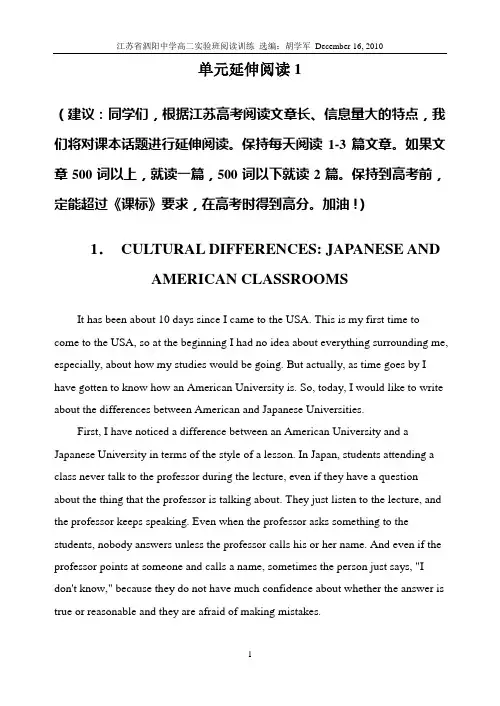
单元延伸阅读1(建议:同学们,根据江苏高考阅读文章长、信息量大的特点,我们将对课本话题进行延伸阅读。
保持每天阅读1-3篇文章。
如果文章500词以上,就读一篇,500词以下就读2篇。
保持到高考前,定能超过《课标》要求,在高考时得到高分。
加油!)1.CULTURAL DIFFERENCES: JAPANESE ANDAMERICAN CLASSROOMSIt has been about 10 days since I came to the USA. This is my first time to come to the USA, so at the beginning I had no idea about everything surrounding me, especially, about how my studies would be going. But actually, as time goes by I have gotten to know how an American University is. So, today, I would like to write about the differences between American and Japanese Universities.First, I have noticed a difference between an American University and a Japanese University in terms of the style of a lesson. In Japan, students attending a class never talk to the professor during the lecture, even if they have a question about the thing that the professor is talking about. They just listen to the lecture, and the professor keeps speaking. Even when the professor asks something to the students, nobody answers unless the professor calls his or her name. And even if the professor points at someone and calls a name, sometimes the person just says, "Idon't know," because they do not have much confidence about whether the answer is true or reasonable and they are afraid of making mistakes.In contrast, in the USA, students attending a class often talk to the professor during the lecture whenever they have a question or they have an opinion. So, a professor in the USA sometimes has to stop the lecture to talk about or explain the thing asked by a student even during the lecture. When the professor asks something to the students, someone answers the question voluntarily, and someone else would answer the question if his or her answer is different from the first person. At that time I think the students don't worry about whether their answers are right or not, but they answer because something occurs to them.Secondly, I have noticed a difference between American and Japanese classrooms in terms of the relationship between teachers and students. In Japan, a professor is considered to be a person who teaches a particular subject. So, a teacher just teaches his or her professional thing to the students and never talks about private things to the students, even outside of class. We have to put a huge distance between ourselves and the teachers, and have to call them Professor Sato, for example. The professors call us also by our last names, with Mr. or Miss. (Some professors call the students' last names without Mr. or Miss.) So, we never talk about private matters with them. In this case, the private matters include daily stuff, such as our failure in a course or our part-time job, or whatever is being used in daily conversation. In contrast, in an American university a professor does teach, of course, their professional subjects, but they tend to talk about their personal matters to some extent, even in lessons. I have heard from some professors about how their husband or wife is and also about their daily affairs. Outside the class, the students talk to their professors about their lives, for example, when they meet in the cafeteria or snack bar. I mean they have a daily conversation with each other. Some students call their professors by their first names if the professor does not mind, and the professors always call the students by their first names, even in the classes.Thirdly, I have noticed a difference in regard to the classroom manners of both the students and teachers. In a classroom of a university in Japan, students have to be formal to show respect to a teacher. Drinking a soft drink or chewing gum during a lesson is considered to be bad manners. I would say a student who has his or her feet on a chair nearby would be told to leave the class. In contrast, American students do the things mentioned above, but unless they interrupt a lecture, they are not considered to be bad. As for the behavior of teachers in Japan, they always stand up during their lectures and never sit down. In contrast, in the USA, they sit down on a chair or even on a desk in the front of a classroom during lessons, although they sometimes stand up.Lastly, I have noticed a difference between American Universities and Japanese Universities in terms of the volume of homework or preparation for the next lesson. In Japan, few teachers request that students prepare for the next lesson or do homework. Even if they do, we do not, since we do not provoke conversation and the teacher can not find out if we have done it or not. In contrast, in an American University, the students are required to study hard to prepare for the next lessons in order to discuss particular things when the time comes. And also, teachers often ask the students to read certain books or to write reports due on a certain day. I would say these are homework. If the students ignore them, it is easily found out that they are lazy or unmotivated, and as a result of that they would get bad scores.I am thinking about these kinds of differences not because I am trying to judge which is better, but because I have felt the differences by facing the two of them. I would say the differences come from the cultural differences, not just from the differences in their educational systems. (911词)2. Custom in ThailandPeople live in Thailand have different culture and food from American people or another country. First of all, we have a great respect older people and parents. We listen to our parents and older people. When we go to school in the morning, we bow goodby to our parents and we comeback we do that again. We bow when we meet older people. We never shake hands or kiss other people. Close friends do touch one another when speaking. Superiors may also touch subordinates to show kindness or concerns. In Thailand, it is common to see friends of same sex hold hands. It indicates close friendship and nothing sexual in nature. Second, when we are speaking to someone, it is importance to make eye contact, physical contact, gestures, facial expressions. It is quite acceptable to gesticulate with hands while speaking. However, it is considered bad form to point an index finger at the person you speak to. Feet must not be used to gesticulate or point, since they are considered "low." Third, food is different. Thai cooking reflected the characteristics of a waterborne lifestyle. Aquatic animals, plants and herbs were major ingredients. Thai cooking methods were stewing and baking, or grilling. Thai meal is served all at once, permitting diners to enjoy complementary combinations of different tastes. A proper Thai meal should consist of a soup, a curry dish with condiments, a dip with accompanying fish and vegetables. A spiced salad may replace the curry dish. The soup can also be spicy, but the curry should be replaced by non spiced items. Thai meal is a harmonious blend of the spicy, the subtle, the sweet and sour, and is meant to be equally satisfying to eye, nose, and palate. In Thailand, we eat rice with food and our family eats every meal together. We do not eat fast food or go out to eat very often. In addition, Thai people are fun loving in nature. They are love having fun. We have different culture, but we are friendly to everybody.(343词)单元延伸阅读2(建议:同学们,根据江苏高考阅读文章长、信息量大的特点,我们将对课本话题进行延伸阅读。
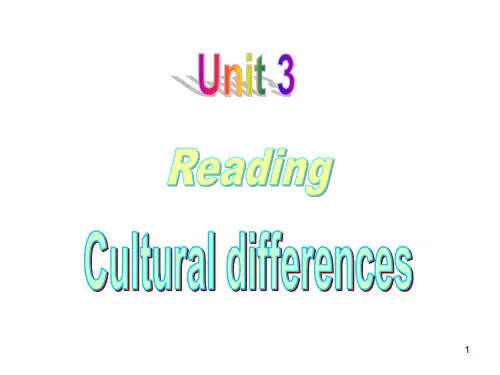
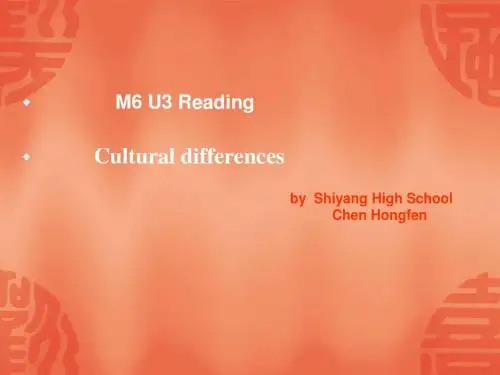
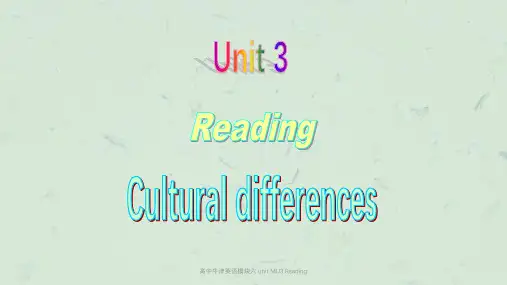
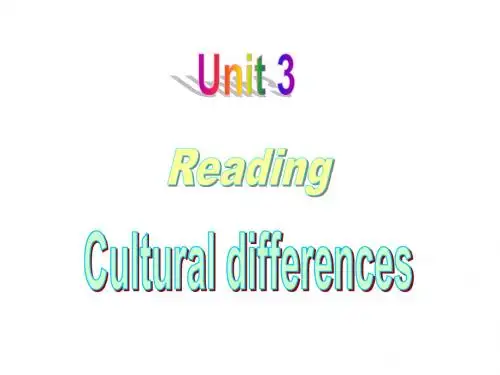
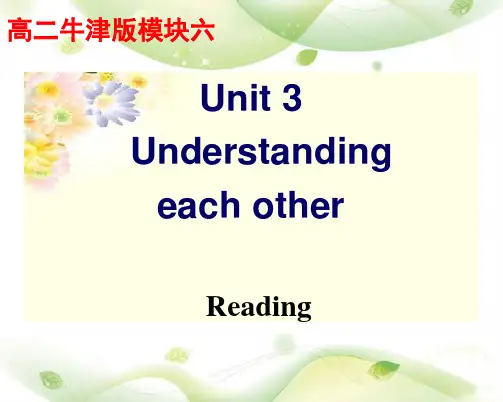
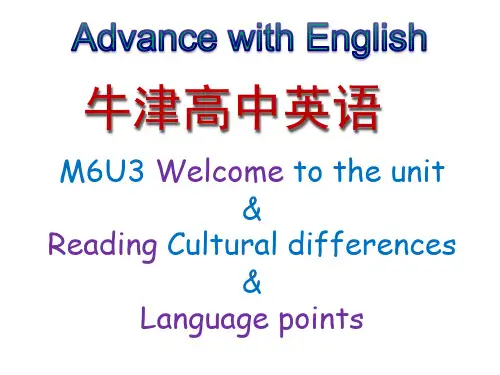
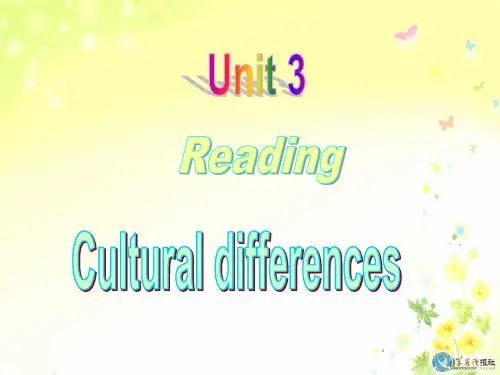
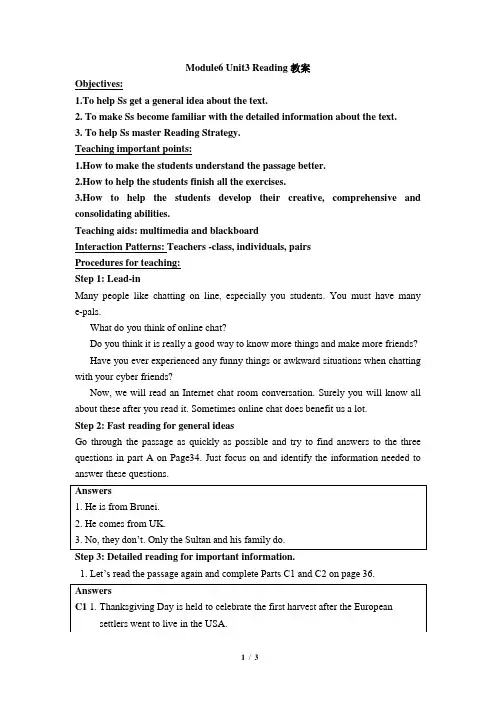
Module6 Unit3 Reading教案Objectives:1.To help Ss get a general idea about the text.2. To make Ss become familiar with the detailed information about the text.3. To help Ss master Reading Strategy.Teaching important points:1.How to make the students understand the passage better.2.How to help the students finish all the exercises.3.How to help the students develop their creative, comprehensive and consolidating abilities.Teaching aids: multimedia and blackboardInteraction Patterns: Teachers -class, individuals, pairsProcedures for teaching:Step 1: Lead-inMany people like chatting on line, especially you students. You must have many e-pals.What do you think of online chat?Do you think it is really a good way to know more things and make more friends?Have you ever experienced any funny things or awkward situations when chatting with your cyber friends?Now, we will read an Internet chat room conversation. Surely you will know all about these after you read it. Sometimes online chat does benefit us a lot.Step 2: Fast reading for general ideasGo through the passage as quickly as possible and try to find answers to the three questions in part A on Page34. Just focus on and identify the information needed to answer these questions.Step 3: Detailed reading for important information.1. Let’s read the passage again and complete Parts C1 and C2 on page 36.2. Turkey.3. In the West, the polite time to open a present is when someone gives it to a person, because they like to see the person’s reaction.4. Guests expect presents as a souvenir to remember the big day.5. Alcohol.6. In Brunel, you should use your thumb to point at things.7. In both places, you should take off your shoes before going inside a house.C2 4 7 3 1 2 6 5Step 4: Practice1. Let’s complete Part D (Re fer to the text while complete part D)AnswersD 1d 2c 3f 4g 5b 6e 7h 8a2. Now, let’s read Ma Li’s diary about her chat room discussion. Fill in blanks with correct words.E 1)traditions 2)Thanksgiving 3)harvest 4)Europe 5)celebrate6)weddings 7)embarrassing 8) presents 9)rude 10) thumbStep 5: Post-reading activities1. Now let’s make up a dialogue by using the questions in Part F on Page 37. Work in pairs for a few minutes and then present your dialogue to the whole class.2. There are also cultural differences in different English-speaking countries. For example:Americans enjoy a good sense of humour; the British take a somewhat different view and believe a formal approach is the best way; the Australians are more informal and straightforward, often enjoying a good laugh and calling their close friends or new acquaintances by their first names.1.Discussion:What might happen if people had no idea of other countries’cultures?Do you think it might result in embarrassment on inconvenience?What do you think about “culture shock”?2.Do you know more information about cultural differences?➢In most countries, nodding your head up and down means ‘yes’.➢In some parts of Greece and Turkey, however, this motion can mean ‘no’.➢In South-eas t Asia, nodding your head is a polite way of saying ‘I’ve heard you.’➢In the United Stated, when someone puts his thumb up, it means ‘Everything is all right.’ However, in Sardinia of Italy and Greece, the gesture is insulting and should not be used there.Step 6:Language PointsStep 7: Homework1. Finish Parts A1 and A2 on page116 in the workbook.2. Prepare the part Word Power.。
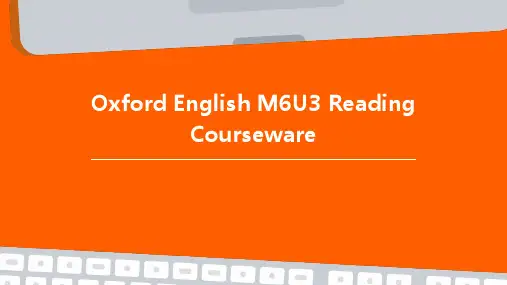

Module 6 Unit 3 Understanding each otherReading(I)Culture differencesPa r tI The Analysis of the Teaching Material1. Status and function of this passage:The reading passage is the highlight of this unit. In this section, students will gain some information about the cultures of different countries and learn to communicate cross-culturally. It not only contains the most important words and sentence structure of this unit but also embodies the theme of this whole unit.2. Teaching aims:1) To help Ss get a general idea about the text.2) To learn how to talk about cultural differences and customs.3) To understand the use of examples.3. Important points & difficult points:1) Talk about cultural differences and understand the use of the examples.2). Important and useful words and phrases.Part II Teaching methods:Reading, discussing, c ooperative learning and explainingPart III Teaching procedures:Step1 Revision and lead-in: Free talkShow some pictures about cultural differences, and then have a free talk about them with the whole class.People from different countries greet each other in different ways because the different cultures. So it is necessary to know the differences among different cultures. So we see without knowing the differences we may misunderstand each other. [Explanation]通过对不同国家、不同问候方式的复习以及它可能会给不了解文化差异的人带来的一些误解,从而引出本课话题。
牛津高中英语教案设计Background of the teaching plan(教案背景):本节课是牛津高中英语模块6第三单元Reading的第一课时,是以阅读为主的课文教学,所有教学设计都是围绕这篇阅读而进行,旨在帮助学生加深对文章的理解,培养学生获取信息和处理信息的能力,从而培养和提高阅读能力。
在教学过程中,通过网页课件的形式将英语阅读的学习任务有机融入信息技术,学生课前在网上搜寻与文化差异有关的网页并保存,在课堂中把英语学科知识的学习和能力的培养与信息紧密结合起来。
全班共有7个学习小组,通过自主学习和小组合作学习培养学生自主、合作探究的学习精神和良好的学习习惯。
Module 6 Unit 3 Reading I(教学课题)An analysis of the teaching materials(教材分析):本节课是牛津高中英语模块6第三单元Reading的第一课时,本单元围绕一个话题—相互理解。
Reading部分包括一个对话和阅读策略,课文展示的是一个发生在网络聊天室里的有关文化差异的对话,三个对话的学生分别来自中国,文莱和英国。
所有教学设计都是围绕这篇阅读而进行,让学生带着问题进行阅读,用略读和寻读的方式来回答一些针对文章的主旨大意和细节内容。
完成课本提供的多样的阅读练习,旨在帮助学生加深对文章的理解,了解一些不同国家的文化信息,培养学生获取信息和处理信息的能力,帮助学生学会如何如何恰当地谈论文化差异并进行跨文化的交流通过阅读。
指导学生运用阅读策略“如何更好地理解文中所举的例子”,并将这种策略运用到实践中去,以便能更好地理解文章,从而培养和提高阅读能力。
通过自主学习和小组合作学习完成特定的学习任务。
Teaching objectives(教学目标)I. Knowledge aims(知识目标)After learning this part, the students are expected to learn how to talk about cultural differences and customs and understand the function of examples in reading.II. Ability aims(能力目标)1. To develop the students’ ability to get a general idea and a brief understanding of the given reading material.2. To master the reading strategy: how to make full use of examples while reading. III. Emotional aims(情感目标)1. To enable the students to be cooperative and helpful when working together.2. To help students to develop right attitudes towards cultural differences.Teaching important points(教学重点)To know about cultural differences and to identify the examples.Teaching difficult points(教学难点)To help students develop practical reading skills and master the effective reading strategy.Teaching methods(教学方法)Skimming; scanning; cooperative work; discussionTeaching procedures(教学过程)Step 1: Revision &Lead-inIn China, how do we often greet each other?要求学生列举不同的问候方式,并导入到其他不同国家的问候方式。
Module6 Unit3要点详解:Reading部分1. Today I would like to talk to you guys and try to accumulate some more information about cultural differences because I have to do a piece of homework on cultural differences.今天我想和伙伴们谈谈,收集一些关于文化差异方面的东西,因为要做有关文化差异方面的作业。
1) accumulate: gradually get more and more Vt. 积累,聚集Reading is a good way to accumulate our knowledge.阅读是积累知识的好办法。
We must accumulate enough evidence to ensure his guilt.我们必须收集足够的证据来确定他的罪行accumulation: n.He is experienced in the accumulation of data. 他在收集资料方面有经验2) difference: n.差异点,不同之处Could you explain to me the differences between British English and American English? 你能给我解释下英美英语的区别吗?There is not much difference in colour. 在颜色上没有多大差别。
The two vases are so alike that I can’t tell the differen ce.这两个花瓶太想像了,很难分辨Whether he comes or not will make a big difference.他来不来有很大影响。